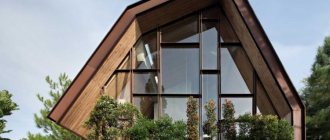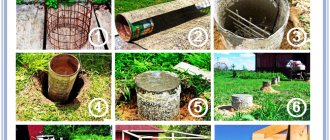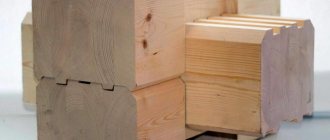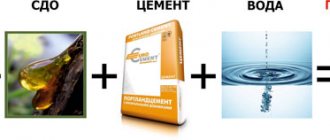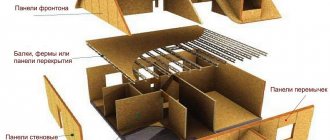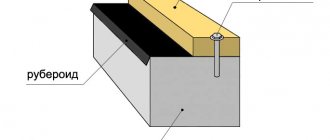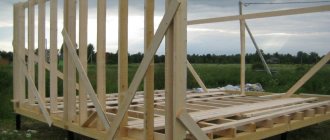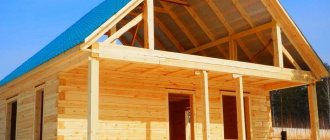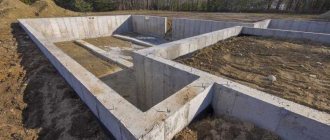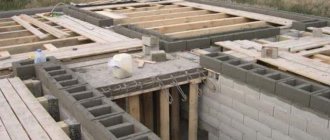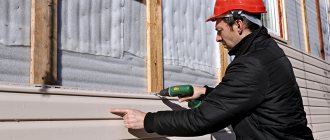Modern, successfully proven technology in construction based on light steel thin-walled structures (LSTC) is becoming increasingly popular and in demand. During the use of this technology both in world practice and in our country, a certain opinion has already been formed about it on the part of contractors and customers of objects. In this article we want to highlight the advantages and possible disadvantages of LSTC technology in order to decide how effective its use in construction is.
Advantages of LSTK technology
1) Speed of construction The most important advantage of this construction technology is the extraordinary speed of creating a project and bringing it to life. The high speed of project assembly is due to the use of lightweight structures made of durable steel. Four builders will fully cope with the task of building a house of 100 m2, and they will spend no more or less than 14 working days. Surprised? LSTK technology is not capable of such records! But the most important thing is that this speed does not harm the quality of the final product at all! Houses built using this method are distinguished by their strength, resistance to destructive environmental influences (moisture, wind, vibrations of the earth’s crust) and excellent heat and sound insulation.
2) Cost-effectiveness Another significant advantage of this technology is a noticeable reduction in costs for construction and finishing materials. It is estimated that the average savings on such costs is 10-15%. In addition, LSTC technology requires less steel consumption, which significantly reduces the total amount of construction costs. Steel savings, at the same time, are approximately 25-50%.
3) Durability LSTC technology is durable and reliable, despite the fact that relatively lightweight structures are used in construction. LSTK profiles have unique strength properties.
4) “Dry” type of construction The term “dry construction” is perfectly suited to describe the LSTK technology. The absence of unnecessary liquid materials eliminates the structure from problems with moisture and its accompanying dampness and mold. This aspect is very important for such high-tech construction as LSTK.
5) “Lightness” LGTS technology significantly benefits from other construction technologies in that its type of construction involves lightweight metal structures. Due to this, you can save on the foundation, because to support lightweight structures you will need an inexpensive, shallow foundation that will in no way “hit” your wallet. Thus, the low weight of the structure helps to increase savings.
6) Caring for the earth's resources Being a relatively new development in modern construction, LSTK shows a careful and scrupulous attitude towards the resources of our planet. In this case, we can talk about high steel savings. The modern development of civilization has taken not one, but three whole steps forward in its evolution, because careful consumption of the Earth’s resources is “worth a lot,” isn’t it?
7) High fire resistance LSTK technology, in addition to the above advantages, has another, no less important advantage, which sets it apart from a number of other modern construction technologies. Surely, you guessed that we are talking about the high fire resistance of structures, which is achieved by introducing a main frame of steel posts and ceilings into the walls of the building. They do not contain flammable materials. On the contrary, this type of construction strives to reduce the range of fire spread, reducing the risk of fire hazard. The time to protect adjacent rooms from fire, in such cases, is approximately 2 hours. This is often enough to call the fire brigade and quickly eliminate the main source of the fire. But, of course, the exact time of protection will depend on the type of materials used in the walls of the structure, as well as the number of steel plates in them. The most common boards used are GVL, GKL, SML, DSP and others. Other wall fillers, namely insulation and mineral wool, will also determine the fire resistance time of the walls.
 Measurement accuracy LSTC structures are very stable and do not change their shapes and line accuracy even after many years. They are not afraid of either moisture or sunlight.
Measurement accuracy LSTC structures are very stable and do not change their shapes and line accuracy even after many years. They are not afraid of either moisture or sunlight.
9) Environmental friendliness In terms of the level of environmental friendliness of production, this method of building a house, perhaps, has no equal: the minimum of construction waste and waste will please not only the team of craftsmen, but also the neighboring living areas.
COST AND TIME OF CONSTRUCTION
The table below shows the average cost of building a turnkey and unfinished house per square meter by type of technology.
| Monolithic | Frame-panel | timber | LSTK | |
| Eurobau | 27 t.r. Per sq. m – without finishing | |||
| INSI | from 17.5 to 20 tr. per sq. m (“turnkey”) of which: foundation - 3.5 tr. Per sq. m materials - 8.75 t.r. per sq. m installation - 4 tr. Per sq. m | |||
| Polar Sip | from 25 to 34 tr. Per sq. m turnkey | 17 t.r. Per sq m | from 20 to 25 tr. Per sq. m turnkey | |
| Mechtaevo | 11 t.r. Per sq. m – without finishing | |||
| "RNR" housing construction | from 18 to 30 tr. per sq. m (“turnkey”) of which: foundation - from 3.5 to 4 tr. Per sq. m materials - 10 tr. per sq. m | |||
| sunny house | 20 t.r. Per sq. m turnkey | 16 t.r. Per sq. m turnkey | 25 tr.r. per sq. m turnkey | |
| Summer season | from 10 to 13 tr. Per sq. m - without finishing., 16.4 - turnkey with finishing | |||
| Bravo villa | Without finishing - from 15 to 25 tr. Per sq. m ("Full construction") Finishing and engineering - 4-15 tr. Per sq. m | |||
| Taldom Profile | 18 t.r. Per sq. m turnkey | |||
| Construction.technologies_Royal_Russia. | 19 tr. Per sq.m. turnkey | |||
| poppies | from Finnish timber - 50 tr. Per sq. m (“turnkey”) from home countries. Brusa - 30-35 t.r. Per sq.m. (“turnkey”) | |||
| Ecopan | from 18 to 22 tr. Per sq. m (“turnkey”) of which foundation and materials from 12 tr. Per sq. m | |||
| Average cost (with interior decoration) | 28,5 | 19 | 32 | 18,5 |
Table 2. Cost of building a turnkey house per square meter by type of technology
Thus, construction using LSTK technology is the cheapest - 18.5 thousand rubles. per sq.m. on a turnkey basis.
Disadvantages of LSTK technology for building houses. Is there any cause for alarm?
When analyzing new technologies and materials, a literate consumer evaluates not only the strengths, but also tries to find potential bottlenecks. Among them the most often called:
- The appearance of cold bridges - places where increased heat transfer occurs in a limited area of the wall. This problem is solved by using so-called thermal profiles - with a perforated surface that “smoothes out” temperature unevenness.
- Difficulties with design. Of course, to ensure the reliability of a building made from a thin profile, each of its elements must be calculated with extreme accuracy. The modern arsenal of professional designers - specialized programs - allows you to draw up a project of even a complex building in a matter of days.
- Thinness of the walls. A small profile thickness for people accustomed to massive walls is synonymous with unreliability. In fact, high-strength steel can withstand even serious dynamic impacts. And, moreover, it is characterized by sufficient sound insulation.
- The cost of a profile obtained by cold bending is higher than that of rolled ones. If you compare prices per ton, the difference is really obvious. However, the metal consumption of the LSTC building is much lower and, as a result, it will be possible to save on metal.
- Lifetime. Many people believe that metal buildings cannot last long because they are susceptible to corrosion processes. However, as experts emphasize, galvanized steel of the first class of coating can “stand” for decades (they even give optimistic figures of up to a hundred years).
- The need for additional corrosion protection. Initially, all materials have an anti-corrosion coating. If it is damaged for one reason or another, the cost of anti-corrosion treatment with special paints or other methods is not so expensive (albeit troublesome).
- Risk of damage to structures during transportation. If you have imagination, you can ruin any material. However, reliable packaging and compliance with transportation and installation rules are enough to avoid damaging durable steel products.
If we analyze the named “disadvantages”, it is obvious that they are based on conservatism - rejection of new construction approaches using a light metal thin-walled frame. A person subconsciously compares them with the usual “monumental” reinforced concrete or blocks. You can change your views only by obtaining reliable knowledge or in practice, personally convinced of the merits of LSTC and debunking existing myths.
In the industrial and commercial sector
Light steel frames are widely used for the construction of the following facilities:
- production premises: warehouses;
- workshops;
- granaries;
- hockey rinks;
Lightweight steel structures are also used to construct modular buildings, which are assembled from prefabricated containers on site. Typically, cafes and canteens, dormitories, hotels, kindergartens and schools, checkpoints and security posts are built using a modular principle. The LSTK panel can be used as a hanging element of ventilated facades.
Common myths about construction technology from LSTK
1) “Cold bridges” This problem is easily solved through the use of special thermal profiles.
2) “Designing lightweight structures is a more labor-intensive process.” This type of construction requires minimal time investment. On average it takes 5-7 days.
3) “Thin walls = weak walls” In fact, walls made of high-strength steel cannot be punched with a fist, as many people think. This material has high sound insulation, as well as flexible and ductile properties, which allows them to withstand severe impacts. Therefore, you don’t have to worry that your neighbors might overhear you or just punch through your wall.
4) “The cost of bent profiles is higher than the cost of rolled profiles” Yes, the cost of this type of profiles is higher than rolled ones, but do not forget that the amount of metal when constructing a house using the LSTK method is significantly less than when using rolled profiles. As a result, you still find yourself in the black.
5) “Low service life” This disadvantage can be easily eliminated by using galvanized steel of the first class of coating for the production of LSTK profiles.
6) “Protection against corrosion is too expensive” The cost of anti-corrosion materials for metal structures is not much higher than the price of the same products for coating wooden structures. Brick buildings can be ignored due to the high costs of the “stone technology” itself.
7) “High probability of damage during transportation” Knowledgeable foremen and workers undoubtedly take into account all the necessary conditions for correct transportation and correct installation of LSTK profiles.
 “Stereotypical rejection of metal structures” It is conservatism and outdated views of what a house should be like that are the main limiting factor in the development and widespread distribution of LSTK metal profiles.
“Stereotypical rejection of metal structures” It is conservatism and outdated views of what a house should be like that are the main limiting factor in the development and widespread distribution of LSTK metal profiles.
Standard building modules made from light steel frames: a) roofing panels; b) wall panels; c) floor panels
Schematic diagram of the building structure based on thermal profiles. Thermal panel structure: 1 – external finishing; 2 – gypsum fiber boards (2 layers); 3 – mineral insulation; 4 – vapor barrier film; 5 – guide thermal profiles; 6 – rack-mount thermal profiles; 7 – thermal profile jumper
Conclusions:
As you can see, construction technology based on light steel thin-walled structures (LSTC) has many positive aspects that will make construction inexpensive, fast, and of high quality.
The construction of structures using lightweight steel frames is not a tribute to public opinion or fashion, but a dictate of the new time. Today, not only new technologies are required, but also new economic approaches to doing business. Innovations, new environmentally friendly and high-quality materials, economically sound and profitable technologies, competent engineering developments - this is the style and method of modern construction. The use of light steel structures best meets these requirements
LSTK technology allows you to successfully complete any technical specification for construction, without violating the deadlines and quality of work. LSTK technology allows you to successfully run a construction business, while receiving profit and moral satisfaction from well-done work and excellent results. Construction based on LSTK technology is the right solution for both builders and customers of structures.
If you build a house from LSTK, this does not mean that you will live in a house made of metal. This only means that the frame of your house will be made of the strongest steel profile, and all other materials will be standard materials usually used in the construction of houses.
TECHNOLOGICAL CHARACTERISTICS OF BUILDING MATERIALS FOR LOW-RISE CONSTRUCTION
| Material | Density Kg/m3 | Thermal conductivity coefficient W/(m*0C) | Heat protection | Required wall thickness for the central region | Operating humidity | Shrinkage, m/mm | Weight 1 m2 walls, kg | Frost resistance, number of cycles | Sound insulation, dBA (with a wall thickness of 380 mm) | Duration of construction, months. |
| Concrete | 2400 | 1,51 | n/a | 1,44 | 2 | 3456 | 60 | n/a | n/a | |
| Expanded clay concrete | 1800 | 0,21-0,66 | 40% | 0,9-1,5 | 5-7% | 1,1-2,4 | 1134 | 50 | 55 | 4-6 months |
| Sand-lime brick | 1800 | 0,81-0,87 | 18% | 2,5 | 6-8% | only the foundation | 1314 | 30 | 6,5 | 8-12 months (severe shrinkage of the foundation) |
| Foam concrete | 600 | 0,21 | 38% | 0,63 | 12% | 2—3 | 160 | 25-35 | 55 | 4-6 months (significant shrinkage) |
| Aerated concrete | 400-500 | 0,09-0,14 | 40% | 0,64-0,8 | 6-8% | 0,3 | 250- 360 | 25 | 55 | 4-6 months (significant shrinkage) |
| timber | 500 | 0,18 | 34% | 0,52-0,56 | 10-15% | 10 | 220 | 25 | 65 | 4-6 months (all year round, (but cannot be finished due to severe shrinkage) |
| Wooden frame | 700-800 | 0,05 | 108% | 0,2 | 12-18% | — | 70-100 | 40 | 70 | 2-4 months (there is practically no shrinkage) |
| LSTK | 200-500 | 0,045 | 115% | 0,15 | 4-8% | — | 50 | 50 | 60 | 2—4 (all year round, no shrinkage) |
Table 1. Technological characteristics of building materials for low-rise construction
Based on the characteristics presented above, LSTK technology outperforms other construction technologies in most respects.
Construction process
Despite the complexity of the construction process, the use of light steel frames can significantly reduce the waste of money and time. Let's talk about this in more detail.
Foundation
It was already mentioned above that the low weight of structures makes it possible to get by with the cheapest and most quickly erected types of foundations. A good choice would be:
- pile,
- bored,
- tape shallow.
All of them are built relatively quickly, are inexpensive, and the volume of earthworks is reduced to a minimum.
Construction
Floors are most often made from the thickest, most durable profile that can withstand heavy loads. In addition to insulation, vapor and waterproofing are required to protect the premises from moisture coming from the ground.
Please note: When assembling wall kits, less thick material is used, with significant voids, which are subsequently filled with thermal insulation.
The installation of roof sheathing is carried out using trusses - they connect the wall structures together. Lathing made of LSTK allows the use of any roofing materials - from roofing felt to tiles.
Facade
The finishing of the facade can be carried out using different materials - from paint to decorative brick. All this depends on the preferences of the customer and the specific features of the object.
